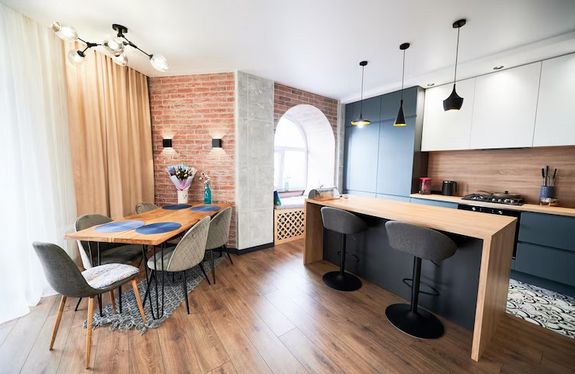Introduction
The kitchen is often considered the heart of a home, where culinary masterpieces are crafted, and cherished memories are made. However, over time, wear and tear can take a toll on this vital space, leaving homeowners yearning for a refreshing change. Kitchen home remodeling offers the perfect solution to breathe new life into your culinary haven, enhancing functionality and aesthetics. This guide explores key considerations, trends, and tips to help you embark on a successful kitchen remodeling journey.
Assessing Your Needs
Before diving into the remodeling process, it's crucial to assess your needs and objectives. Consider how you currently use your kitchen and identify areas that require improvement. Are you seeking more storage space, better workflow, or updated appliances? Understanding your priorities will guide the decision-making process and ensure that the remodel aligns with your lifestyle.
Budget Planning
Establishing a realistic budget is a fundamental step in any remodeling project. Outline your financial limits and allocate funds to different aspects of the renovation, such as cabinetry, appliances, flooring, and lighting. Keep in mind that unforeseen expenses may arise, so it's wise to set aside a contingency fund. By having a clear budget, you can make informed choices without compromising on quality or exceeding your financial boundaries.
Design Trends
Staying abreast of current design trends can inspire and inform your remodeling decisions. As of the latest trends, open shelving, mixed materials, and bold color choices are gaining popularity. However, it's essential to strike a balance between trendy and timeless to ensure your kitchen remains stylish for years to come. Neutral base colors with pops of accent hues, classic subway tiles, and functional yet elegant storage solutions are examples of design elements that stand the test of time.
Layout Considerations
The kitchen layout significantly impacts its functionality. The classic work triangle, connecting the sink, stove, and refrigerator, remains a popular choice. However, modern kitchen design often incorporates versatile layouts, such as the L-shaped or U-shaped configurations, to optimize space and create a more seamless workflow. Assess your kitchen's size and shape to determine the most suitable layout that caters to your cooking and socializing needs.
Material Selection
Choosing the right materials is pivotal in achieving a cohesive and durable kitchen design. From countertops to flooring, each material contributes to the overall aesthetic and functionality. Granite or quartz countertops offer durability and elegance, while hardwood or ceramic tile flooring provides a timeless appeal. Cabinets made from high-quality materials not only enhance aesthetics but also ensure longevity. Carefully research and select materials that align with your style preferences, maintenance requirements, and budget constraints.
Appliance Upgrades
Modernizing your kitchen often involves upgrading appliances to enhance efficiency and energy savings. High-performance, energy-efficient appliances not only contribute to a greener environment but also reduce long-term operational costs. Consider smart appliances that offer advanced features, such as programmable settings, remote monitoring, and energy-saving modes, to elevate your kitchen's technological prowess.
Lighting Solutions
Proper lighting is a key element in creating an inviting and functional kitchen. A well-lit space not only enhances safety but also showcases the design elements. Incorporate a mix of ambient, task, and accent lighting to illuminate different areas of the kitchen. Pendant lights above the island, under-cabinet lighting for task areas, and recessed lighting for general illumination are popular choices. LED fixtures are energy-efficient and provide a wide range of color temperatures to suit various moods.
Storage Optimization
Ample and well-organized storage is essential for a clutter-free and efficient kitchen. Utilize cabinetry with smart storage solutions, such as pull-out shelves, deep drawers, and built-in organizers. Consider vertical storage options for pots, pans, and utensils to maximize space. Customized storage solutions tailored to your specific needs can transform your kitchen into a highly functional and organized space.
Conclusion
Embarking on a kitchen home remodeling journey requires careful planning, thoughtful consideration, and a keen eye for design. By assessing your needs, establishing a realistic budget, staying informed about design trends, optimizing layout and materials, upgrading appliances, implementing effective lighting solutions, and maximizing storage, you can revitalize your kitchen into a space that not only meets your practical requirements but also reflects your personal style.
Remember that a successful kitchen remodel involves a harmonious blend of aesthetics and functionality. Striking this balance ensures that your investment stands the test of time, providing enduring satisfaction and value to your home. So, roll up your sleeves, get inspired, and transform your kitchen into a rejuvenated haven where culinary adventures unfold and memories are etched into the heart of your home.





Comments